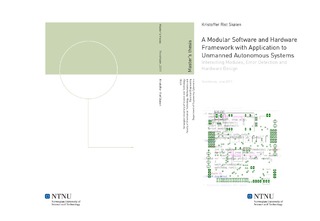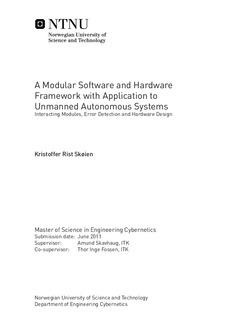| dc.description.abstract | The Department of Engineering Cybernetics at the Norwegian University of Science andTechnology established the Unmanned Vehicle Laboratory fall 2010. The goal is to havestudents develop a fully functional autonomous aerial vehicle over time as part of projects and master s theses. A range of projects were carried out fall 2010, among others the report General Platform for Unmanned Autonomous Systems was written on the topic of hardware, operating systems and peripheral interfacing.This master s thesis continues where the previous report left suggestions for further work, and covers the topics of a software framework, sensor error detection, actuator and sensor interfacing, that is now part of the autonomous flight system.A highly modular software framework has been constructed, applicable far beyond theunmanned vehicle domain. Due to the high level of encapsulation and modularity it isespecially valuable in projects where there is a high mobility of the workforce, such as student projects and theses. It acts as a middleware layer, with language independent, separately compilable modules, communicating with one another to achieve the desired functionality.To prevent unrealistic or erroneous sensor readings from spreading through the system, a software detection unit catches signal anomalies based on statistics and alerts subscribing modules. The algorithm has been interfaced into the software framework, and is applicable to numerous sensors.Hardware was designed, constructed and tested to handle sensor interfacing, power supply demands and real-time critical actions such as actuator control. The design is performed from an aerial vehicle application point of view, but general to such an extent that is usable in a wide range of autonomous crafts.The framework, filter and hardware are merged together and tested on an embedded system, verifying the system functionality with a feedback loop from measurements to actuators. Utilizing the previous work along with all three elements of this thesis, a fully functional system for vehicle control is achieved. | nb_NO |

